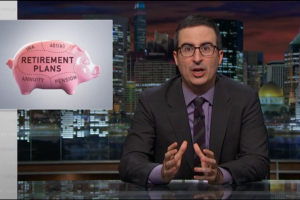Please note that I am not qualified to give tax advice and none of the information below should be used without the guidance of a professional tax adviser who is familiar with all the relevant facts.
It’s time for the often fruitless social convention of making New Year resolutions. Twelve months ago mine was to have the year of my life. I’m happy to report I actually stuck to this one. After years of dreaming, I had finally built up the resolve to take a career break and travel the world.
It wasn’t an easy decision to temporarily part ways with what had so far been a successful decade-long career as an investment manager. If you go back even further, I had consistently maintained some form of steady employment since I was 15 years old, so the idea of not having an income was initially quite terrifying. What if I hadn’t saved enough? What if I wasn’t able to find comparable employment when I got back? But as I stood perched on the rooftop of the Windsor Excelsior Hotel in Rio de Janeiro overlooking some two million revelers at the largest New Year’s Eve Celebration in the world, I knew I would not regret it.
I know there are many people out there who harbor some desire to do the same as I have. I certainly wasn’t the first among my friends to do this and I hope I won’t be the last. Unfortunately, the money concerns are hard for many to overcome. You can’t argue that something like this could do anything but hamper your long-term financial plan. Or can you? Allow me to give it a shot.
There is actually a very useful way you can use a career break to save money on income taxes (beyond the obvious fact that if you don’t earn money you don’t owe any), and that is with a Roth conversion. This is when you move assets from a pre-tax retirement account, such as a 401k plan or traditional IRA, to an after-tax Roth IRA. The IRS allows you to do this, but the converted assets are then taxed at your marginal federal income tax rate. So for this strategy to work optimally you need to plan your career break to span a complete calendar year so you are not earning any other taxable income. I resigned from my position in December of 2013 and didn’t earn any money in 2014, thus providing me with a tax-friendly opportunity to convert a portion of my traditional pre-tax retirement savings into Roth savings that will never be taxed again.
Here’s how it works. If you are, for example again, a single filer earning no other income, you could convert up to $10,150 in traditional retirement assets into a Roth IRA without owing a cent in taxes by using the 2014 standard deduction and personal exemption to offset it. That’s a no-brainer for anyone in this situation, but converting additional assets could also make sense if it is done at lower tax rates than in your working years. The next $9,075 would only be taxed at 10% and the next $27,825 beyond that would be at the 15% rate. If you add that all up you come to $47,050 in converted retirement assets for a federal tax cost of $5,081 — an effective rate of only 10.8%. That conversion would cost you $13,174 if you were working and fell into the 28% marginal income tax bracket; a savings of $8,093.
The benefits of this strategy go far beyond that, though. Traditional retirement assets are easier to accumulate than the Roth kind. Companies typically provide employees with a traditional 401k plan, and if you’re really lucky a defined-benefit pension plan as well. While the IRS allowed you to tuck away up to $17,500 in that 401k in 2014, it only allowed you to put away $5,500 in either a traditional or Roth IRA and the Roth option phased out between $114,000 and $129,000 in adjusted gross income (AGI) for single filers. Pension income, 401k distributions, traditional IRA withdrawals, and a portion of your Social Security benefits are all taxable in retirement while Roth IRA withdrawals are not. Having more money in a Roth account provides an investor with better tax diversification. Having money divided between traditional and Roth accounts affords you much more flexibility in managing your tax liability in retirement. If, like me, you have over 30 years to retirement and we assume a 7% rate of return on your investments, that $5,081 spent in taxes today for the Roth conversion could mean over $100,000 in tax savings down the road depending on your tax bracket.
It’s important that you be able to fund your career break — and your Roth conversion taxes — without touching your retirement money. You also want to make sure you pay your estimated taxes when you do the conversion so you don’t find yourself in a position where you owe penalties for underpayment come tax return time. On the positive side you will likely find traveling the world to be significantly less expensive than living your regular life back home. That $2,000 per month rent in Chicago goes a lot further on the international hostel market.
Why wait until retirement to really enjoy life? Why not take one of those years away from your future old and feeble self and enjoy it now while you are young and spry enough to make the most of it? Career breaks are a great way to recharge your batteries and they allow you to pursue interests that a regular 9-5 simply won’t allow you to do. This kind of lifestyle doesn’t need to be limited to freewheeling hippies. Don’t let your life pass you by because you are hung up on some pre-conditioned belief of what responsible people are supposed to do. If the opportunity is utilized properly, a career break can help put you in a better tax position when it’s time to retire for good.



